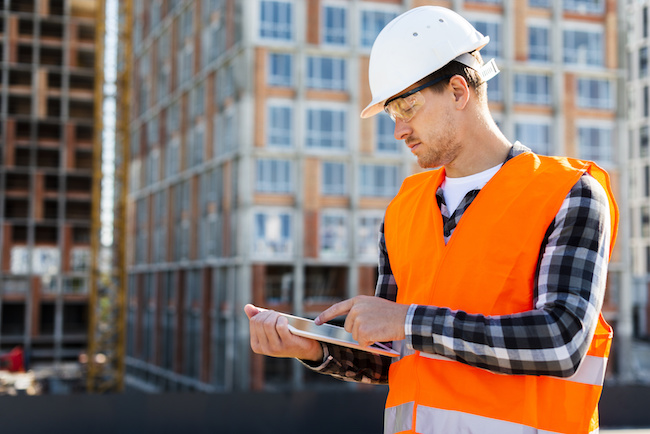
Making use of technology for safer job sites
By Jacob Stoller
Health & Safety SoftwareHigh tech safety devices and software can’t eliminate construction risks, but they can make them more visible

By tracking both the location of hazards and the movement of individuals on the site, security software can connect the dots and initiate preventive or corrective measures. PHOTO: Adobe Stock/Freepik
Although keeping workers safe is widely acknowledged as one of construction’s top challenges, digital safety technology that is now typical in manufacturing facilities has been relatively late to arrive on job sites. However, as the technology matures, it is becoming more adaptable to construction, leading to wider adoption.
Job site hazards are similar in many respects to those experienced in factories, but construction sites face the added challenge of being unique and constantly evolving, making threats difficult to isolate and safe work practices difficult to monitor.
Technology attacks this problem by making the threats more visible. By tracking both the location of hazards and the movement of individuals on the site, security software can connect the dots and initiate preventive or corrective measures.
“Connectivity is in my mind the focus for the technology,” says Eugene MacMahon, Health, Safety, and Environmental manager, Edmonton District for PCL Construction. “You can’t look over every shoulder every minute of every day, but technology can help us with that.”
One of the keys is replacing cellphones, which are restricted on many job sites, with technology that doesn’t distract workers and make their jobs even more dangerous. “The technology has to be there,” MacMahon says, “but the workforce shouldn’t even be aware that they are using it.”
The other component is leveraging the data from the hundreds or even thousands of Internet of Things (IoT) sensors that are now becoming typical on many job sites. This makes it possible to identify not just proximity to a dangerous piece of equipment like a crane, but any condition that might pose risk of injury, such as exposure to extreme cold or working with a tool for too long.
“All attributes of the work environment — temperature, vibration, elevation — can be captured and provide input to make the workplace a safer place,” MacMahon says. “It’s all very simply done — it’s just a matter of packaging it all together so that it can actually be used.”
BLENDING SAFETY AND SECURITY
Automated access control is also being implemented on more and more job sites, and the technology can be expanded upon and leveraged to keep workers safe.
“One of the ways companies ensure safety is by making sure people who go on-site have the qualifications to be there in the first place,” says Matthew Ramage, Worldwide Marketing and New Business Segment director for Trimble Inc.
For example, access control systems can be linked to an employee’s training credentials. “At any point, a worker’s safety training could go out of date,” Ramage says, “so they might be a risk to themselves and others. Maybe there’s a new earth mover and they don’t realize how fast the arm can move, or new equipment that has a function or speed that they are not aware of.”
The technology also helps companies respond to emergencies. If a lone worker falls, medical assistance can be dispatched immediately. And if a site has to be evacuated, electronic systems can provide an instant reading of who is still on-site and might be at risk.
Another security tool that can be leveraged for safety is the ever-present video camera. “Having security cameras won’t avoid a lot of the safety issues that occur on sites, but the video will definitely help in the investigations and understanding what happened,” says Mike Baxter, director of sales, Canada for Richmond, B.C.-based Radius Security.
In addition to their traditional use in compliance and accident reporting, clips of accidents and near misses can be incorporated in training videos, or as input for improving processes. Baxter also notes Radius cameras regularly catch thrill-seeking crane climbers who pose danger to themselves and others.
A new approach that PCL is experimenting with is the use of artificial intelligence to help identify risks from safety inspection photographs, reducing the administrative burden of categorizing thousands of photos.
“The software identifies the hazard and categorizes it,” MacMahon says. “This isn’t to take away the thought process out of it — it’s more to try and make lean the process of safety inspection.”
In general, there’s no substitute for the underlying thought processes that form the foundation of a successful safety program. While technology can’t ensure that people think, it can increase the overall level of awareness by making safety risks highly visible and difficult to ignore.
Jacob Stoller is principal of StollerStrategies. Send comments to editor@on-sitemag.com
This column first appeared in the February 2020 edition of On-Site. You can read the entire issue here.





